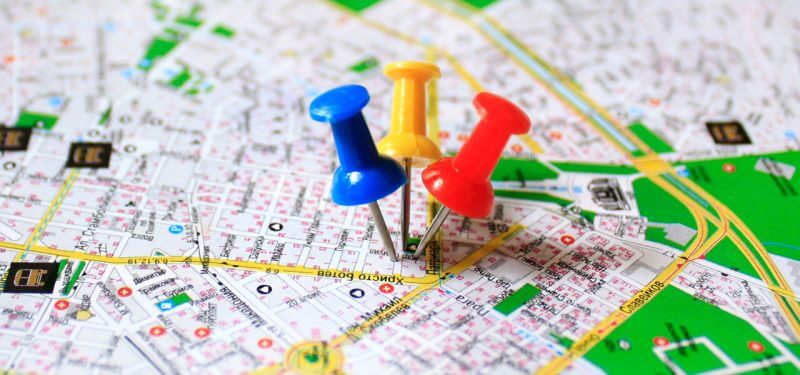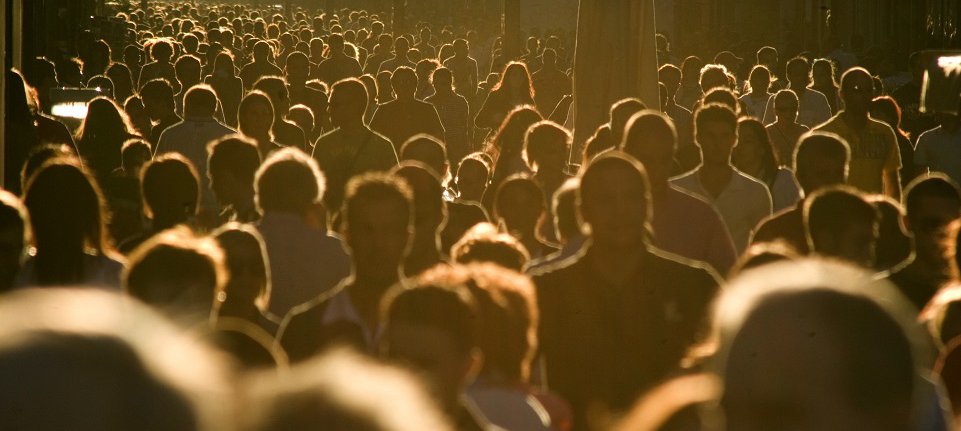
Facebook is one of the most effective marketing channels for luxury home sales.
However, like every other business, whether you win or lose is highly predicated on how much information you have.
I hear some realtors say “Facebook is dead.”
Others say “I have never sold a pin on Facebook.”
Blah…blah…blah..
They are are all wrong and you are about to find out in this article.
Facebook is a well of data and that makes it a veritable marketing platform for luxury home sales.
Table of Contents
Why Facebook?
How can anyone think Facebook doesn’t work? This sounds completely bizarre.
Facebook is Number One!
With 2.4 billion monthly active users on the platform, the acquisition of Instagram and WhatsApp, and the integration of all three mega platforms into its advertising framework, it forms enough reasons to convince anyone looking to sell luxury homes in Nigeria to select Facebook as its number one choice for advertising.
Also read: how to boost post on Facebook and Instagram.
The Facebook Algorithm

The Facebook algorithm is the machine that determines the content we consume every time we are on the platform.
All of our touchpoints on Facebook,the clicks, likes, shares, comments, and interactions are tracked in order to understand the content people prefer and subsequently distribute more of that type of content to them.
This learning and predictive capability of the algorithm is what makes Facebook a very powerful marketing platform to sell products and services.
In a nutshell, the Facebook algorithm learns and records the behaviors and interests of its users to give them more of the content they like.
Now let’s talk strategies that will help you sell those high ticket apartments.
Six Facebook Strategies:
Choose the LEADS objective

This is where most Facebook advertisers miss it. and waste loads of their marketing budget.
Luxury home sales on Facebook begins with selecting the right campaign objective.
Based on your business vertical as a real estate business, the Facebook leads generation objective is the most appropriate.
The Leads generation is designed to help you collect contact details like name, phone number and email address when someone signs up on your form.
From this, you can build a list of prospects for your properties, that you could either cold call or email for possible conversion to sales.
Target Your Location

The Facebook delivery system can target high-profile prospects based on their location.
When you create your advertising, there are targeting options that help you select places where your ideal audience lives.
This way, you will exclude every other place you don’t want the ad to be shown to.
Now let me show you how it looks on Facebook:

The plus signs helps you zoom in and the minus zooms out.
This makes it possible to narrow down the distribution of your ads to specific places you want.
Interests and Behaviors Mapping

Targeting the wealthy and affluent through their interests and behaviors is one of the coolest techniques if you want to sell expensive homes on Facebook.
From the Facebook ads manager, you can search out interests in luxury real estate, luxury goods, and luxury in general.
This targeting formula is how Facebook determines the ads we see based on our interests.
In other words, people who have an affinity for “luxury homes” will be targeted when anyone tries to market luxury homes on Facebook.

Build a Marketing Funnel

What is a marketing funnel?
It is a systematic marketing process that nurtures a person from the point of first interaction with a business until they become a customer.
The concept of a marketing funnel is based on the fact that everyone has a unique journey.
Four stages of a marketing funnel (AIDA)
In the world of marketing, understanding the journey your customers take from the first interaction with your brand to the final purchase is crucial.
The AIDA model is a widely recognized framework that outlines the four stages of this journey:
Awareness, Interest, Desire, and Action. By effectively guiding potential customers through these stages, businesses can optimize their marketing efforts to convert prospects into loyal customers.
In this article, we’ll dive deep into each stage of the AIDA model and explore how you can implement strategies to maximize your marketing funnel’s effectiveness.
1. Awareness: Capturing Attention
Objective: The primary goal of the Awareness stage is to capture the attention of your target audience and make them aware of your brand, product, or service.
Key Strategies:
- Content Marketing: Create high-quality, valuable content that addresses the needs, pain points, or interests of your audience. Blog posts, infographics, videos, and social media content are effective tools for increasing brand visibility.
- SEO Optimization: Optimize your content for search engines to ensure that your brand appears in relevant search results. Use targeted keywords, meta descriptions, and backlinks to improve your ranking.
- Paid Advertising: Utilize pay-per-click (PPC) advertising, display ads, and social media ads to reach a wider audience and generate initial interest.
Example: A skincare brand might create a blog post on “The Best Natural Ingredients for Glowing Skin,” sharing it across social media platforms and optimizing it for search engines to attract users searching for skincare tips.
External Resource: To explore more on creating compelling content, check out Content Marketing Institute’s guide on content creation.
2. Interest: Building Engagement
Objective: Once you’ve captured the audience’s attention, the next step is to engage them by providing information that resonates with their needs and interests.
This stage is about fostering a connection between the potential customer and your brand.
Key Strategies:
- Email Marketing: Offer valuable resources like eBooks, whitepapers, or webinars in exchange for email subscriptions. Use personalized email campaigns to nurture leads by providing relevant content and offers.
- Social Media Engagement: Interact with your audience on social media by responding to comments, running polls, and sharing content that encourages discussion.
- Retargeting Ads: Implement retargeting campaigns to re-engage users who have previously visited your website but haven’t yet made a purchase.
Example: The skincare brand could offer a free guide on “How to Build a Natural Skincare Routine” in exchange for email sign-ups, followed by a series of emails introducing products that address common skin concerns.
3. Desire: Cultivating a Strong Want
Objective: In the Desire stage, the focus is on convincing potential customers that your product or service is the solution they need. It’s about transforming interest into a strong desire to purchase.
Key Strategies:
- Product Demonstrations: Use videos, webinars, or live demonstrations to showcase how your product solves specific problems or meets needs.
- Testimonials & Reviews: Highlight customer testimonials, case studies, and reviews to build trust and credibility. Social proof is a powerful tool in this stage.
- Exclusive Offers: Provide limited-time discounts, special offers, or bundles to create a sense of urgency and enhance the appeal of your product.
Example: The skincare brand might create video tutorials showing the benefits of their products, supported by customer testimonials that emphasize real results. They could also offer a limited-time discount to encourage purchases.
External Resource: For insights on the power of social proof, see Psychology Today’s article on social proof in marketing.
4. Action: Encouraging the Final Step
Objective: The Action stage is where the potential customer makes the final decision to purchase. The goal is to make the buying process as easy and compelling as possible.
Key Strategies:
- Clear CTAs (Call to Action): Use strong, clear CTAs on your website, landing pages, and emails to guide users toward making a purchase. Phrases like “Buy Now,” “Get Started,” or “Claim Your Offer” are effective.
- Simplified Checkout Process: Ensure that your checkout process is user-friendly, with minimal steps and multiple payment options. Reducing friction at this stage is key to preventing cart abandonment.
- Follow-Up: After the purchase, follow up with a thank-you email, offer additional resources, or suggest complementary products to encourage future purchases.
Example: The skincare brand might use a CTA like “Shop Now and Get 20% Off Your First Order” on their product pages and emails. After the purchase, they could send a thank-you email with tips on how to use the products and a discount on the next purchase.
External Resource: For tips on optimizing your checkout process, visit Shopify’s guide on reducing cart abandonment.
Conclusion
The AIDA model is a powerful framework that guides marketers through the process of attracting, engaging, and converting potential customers. By understanding and effectively implementing strategies at each stage—Awareness, Interest, Desire, and Action—you can optimize your marketing funnel to drive more conversions and grow your business.
Remember, the key to success lies in continuously analyzing your funnel, identifying any bottlenecks, and refining your strategies to better meet the needs of your audience. With the right approach, the AIDA model can help you create a seamless customer journey that not only boosts sales but also builds long-term customer loyalty.
Re-targeting

What is RE-TARGETING
Re-targeting is a strategy that sends people back to your website or funnel if they didn’t make a purchase or reach the ultimate marketing goal.
The custom audience is what Facebook uses to create an audience for retargeting.
They may have visited your website, watched your video, or responded to your Facebook event.
As people watch the videos of your expensive apartments showing the lawn, the facilities, and maybe a sky blue swimming pool, it would be smart to reach out to them again until they complete their conversion journey.
LOOKALIKE AUDIENCES

Anyone looking to successfully sell luxury homes on Facebook must understand the importance of data.
Facebook is abundant with data. This data helps it build all kinds of audiences.
What is a Lookalike?
This is an audience that is extracted from Facebook and modeled after those people who have previously engaged with your business.
This lookalike audience can be built based on your website visitors, customer list, Facebook followers, events, video views, and Leads form.
Here is a simple step on how to create this audience on the Facebook ads manager.

These audiences, you see in the screenshots above, share similar attributes with your previous customers, and this is quality marketing for your real estate business.
Conclusion
The strategies and recommendations detailed in this article have been tried and tested and would help make your real estate marketing journey more profitable and scalable.
You can book an appointment if you desire more insights and expert support with your real estate marketing on Facebook.





